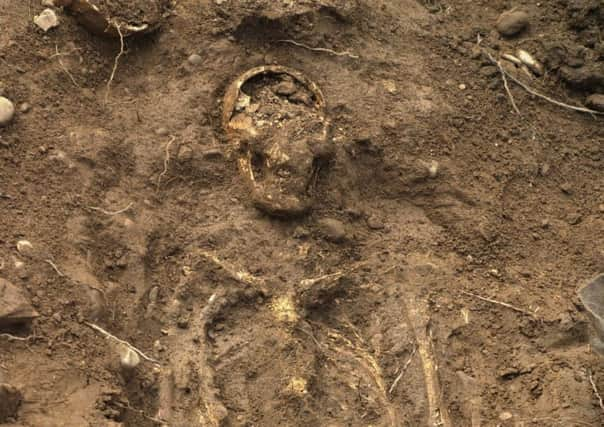Historical murder uncovered at North Berwick


Experts say the dig at the Kirk Ness site, carried out by Edinburgh-based Addyman Archaeology, has strengthened the notion that the site was once inhabited as well as being the site of the parish’s church. Already, stone tools, lead objects, ceramic material and bones of butchered seals, fish and seabirds have been discovered there, as well as structural remains.
Archaeologists, who uncovered various graves at the historic site, believe that the man was killed by a “dagger-like” weapon, which had a symmetrical lozenge-shaped blade with very sharp edges and was probably at least 70mm long.
Advertisement
Hide Ad“Being at the centre of a 900-year-old murder mystery is very exciting for the Scottish Seabird Centre,” said Tom Brock, chief executive of the centre.
“As an independent visitor attraction, conservation and education charity, we are dedicated to inspiring people to enjoy, protect and learn about their local environment and this dig has allowed us great insight into how life was lived in the North Berwick area almost 1,000 years ago.”
Experts believe there was a degree of “professionalism” to the killing, due to the shape of the weapon, which was a type thought to be carried mainly by the military, combined with the accuracy of the stab wounds.
It is not possible to ascertain whether the skeleton may have had other injuries, due to the legs and some of the right side of the body being cut away in later burial. However, the archaeologists have been able to conclude that the figure is that of a man over 20 years of age, slightly better built than average, with wear to the shoulder suggesting possible archery practice.
Rod McCullagh, senior archaeology manager at Historic Scotland, which supports the dig, said: “We welcome the publication of the Kirk Ness report, which is the result of a successful partnership between Historic Scotland and the Scottish Seabird Centre. Their expansion triggered an archaeological excavation of an important medieval cemetery, which revealed the remarkable remains of buildings dating to the 5th to 9th centuries AD.
“These archaeological discoveries and the subsequent analyses mark a significant advance in our understanding of the early history of North Berwick.”
Advertisement
Hide AdKirk Ness is well known as the site of the medieval church of the parish and later royal burgh of North Berwick but it has long been suggested that it was also a centre of early Christian activity.
The findings have been documented in a book, The Medieval Kirk, Cemetery and Hospice at Kirk Ness, North Berwick: the Scottish Seabird Centre Excavations, which will be launched at an event at the Scottish Seabird Centre next month.
SEE ALSO